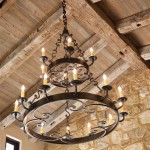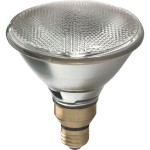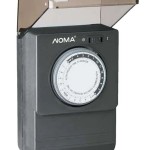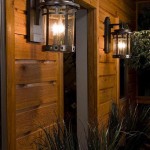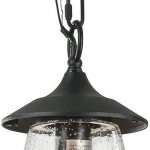Is It Ok To Leave Outdoor Furniture Cushions Outside In The Rain?
The question of whether outdoor furniture cushions can withstand rain exposure is a common concern for homeowners and businesses alike. The answer is not straightforward, as it depends heavily on several factors, including the materials used in the cushion construction, the type of rain, and the immediacy of drying the cushions after they get wet. Understanding these variables allows for informed decisions regarding outdoor cushion care and maintenance, ultimately extending their lifespan and maintaining their aesthetic appeal.
Outdoor furniture is designed to withstand the elements to a certain extent. However, cushions often present a different challenge due to their absorbent nature. They are typically made of porous materials that can trap water, leading to a range of problems if left unattended. These problems can range from simple discoloration and mildew growth to more serious issues like structural damage and degradation of the cushion materials.
Therefore, before leaving cushions outdoors unprotected in the rain, a thorough assessment of their composition and inherent water resistance is essential. This assessment will inform the best course of action, which might involve covering the cushions, storing them indoors, or treating them with protective coatings.
Understanding Cushion Materials and Water Resistance
The primary factor determining a cushion's ability to withstand rain is the material from which it is made. Both the outer fabric and the inner fill play significant roles in how the cushion responds to moisture. Some materials are inherently more water-resistant than others, and understanding these differences is crucial for proper cushion care.
Outdoor cushion fabrics are often treated with water-repellent finishes. These finishes, however, are not permanent and diminish over time with exposure to the elements, including sunlight, rain, and routine cleaning. The effectiveness of these finishes also varies between different fabrics, with some providing better initial protection than others.
Common outdoor fabric options include acrylic, polyester, and olefin. Acrylic fabrics, such as Sunbrella, are highly regarded for their water resistance, UV resistance, and fade resistance. These fabrics are typically solution-dyed, meaning the color penetrates the entire fiber, rather than just coating the surface. This makes them less prone to fading and more durable overall. Polyester fabrics are generally more affordable than acrylics and offer decent water resistance. However, they may not be as durable or fade-resistant as acrylics. Olefin fabrics are another popular choice, known for their resistance to mildew, stains, and fading. They are also relatively water-resistant and often used in outdoor applications.
The fill material inside the cushion is equally important. Common fill materials include polyester fiberfill, polyurethane foam, and down alternatives. Polyester fiberfill is a relatively inexpensive option that offers moderate water resistance. However, it can become compressed over time and may not provide the same level of support as other options. Polyurethane foam is a common choice for outdoor cushions due to its ability to provide comfortable support. However, it is highly absorbent and can retain water for extended periods, leading to mildew growth and structural damage. Open-cell foams are particularly prone to water retention. Closed-cell foams are a better option, as they are less absorbent, but they can still become waterlogged if exposed to prolonged rain.
Down alternatives, such as cluster fiber fill, are designed to mimic the properties of natural down while offering improved water resistance. These materials are often treated with hydrophobic finishes to further enhance their water repellency. However, even with these treatments, down alternatives can still absorb some moisture and may require more frequent drying.
Therefore, the ideal outdoor cushion is constructed from a combination of water-resistant fabric and a fill material that either resists water absorption or dries quickly. Regularly checking the condition of the fabric and fill will help in determining the need for re-treating the fabric with a water repellent or replacing the fill material altogether.
The Impact of Rain Type and Drainage
The type of rain and the surrounding environment also play a significant role in how outdoor cushions fare. A light drizzle poses a different challenge than a heavy downpour, and the availability of adequate drainage can greatly influence how quickly cushions dry out.
Light rain may only dampen the surface of the cushion, allowing it to dry relatively quickly, especially on a warm, sunny day with good air circulation. However, prolonged exposure to even light rain can eventually saturate the cushion, especially if the fabric's water-repellent finish has worn off. Heavy rain, on the other hand, can quickly overwhelm the protective capabilities of the fabric and saturate the cushion within a short period. This is particularly problematic for cushions with highly absorbent fill materials.
Furthermore, the environment surrounding the outdoor furniture can affect how quickly the cushions dry. If the furniture is placed in a shaded area with poor air circulation, the cushions will take longer to dry, increasing the risk of mildew growth. Conversely, if the furniture is placed in a sunny, well-ventilated area, the cushions will dry more quickly, minimizing the potential for damage. The presence of standing water around the furniture can also contribute to moisture absorption, even if the cushions are not directly exposed to rain.
Proper drainage is essential for preventing water from pooling around the cushions. Furniture designs that allow water to run off easily, such as those with slatted seats or raised platforms, are preferable. Cushions should also be designed to allow water to drain, either through the fabric itself or through strategically placed vents. Regularly inspecting the cushions for signs of water damage, such as discoloration or mildew growth, is crucial for addressing problems before they escalate.
The frequency with which cushions are exposed to rain also factors into their longevity. Continual wetting and drying cycles can slowly degrade the materials, reducing their water resistance and overall durability. If cushions are frequently exposed to rain, it may be prudent to invest in high-quality, water-resistant fabrics and fill materials, or to take extra precautions to protect them from the elements.
Maintenance and Protective Measures
Regardless of the materials used in their construction, all outdoor cushions benefit from regular maintenance and protective measures. These practices can significantly extend the lifespan of the cushions and help maintain their appearance and functionality.
Regular cleaning is essential for removing dirt, debris, and stains that can compromise the water resistance of the fabric. A simple solution of mild soap and water is often sufficient for cleaning most outdoor fabrics. However, it is important to follow the manufacturer's instructions for specific cleaning recommendations. Avoid using harsh chemicals or abrasive cleaners, as these can damage the fabric and reduce its water resistance. After cleaning, thoroughly rinse the cushions with clean water and allow them to dry completely before storing them or placing them back on the furniture.
Reapplying a water-repellent treatment to the fabric can help restore its protective properties. These treatments are available in spray-on form and can be easily applied at home. Before applying a treatment, ensure that the cushions are clean and dry. Follow the manufacturer's instructions carefully and apply the treatment evenly to the entire surface of the fabric. Reapply the treatment periodically, especially after cleaning or prolonged exposure to rain.
When not in use, storing the cushions in a dry, protected area is the best way to prevent water damage. A shed, garage, or covered patio are all suitable options. If storing the cushions outdoors, invest in waterproof covers to protect them from the elements. Ensure that the covers are breathable to prevent condensation from building up inside. Before storing the cushions, ensure that they are completely dry to prevent mildew growth.
In situations where storing the cushions is not practical, consider using furniture covers to protect them from the rain. These covers are available in a variety of sizes and materials and can provide a barrier against moisture. Ensure that the covers are properly secured to prevent them from blowing away in the wind. Periodically remove the covers to allow the cushions to air out and prevent condensation buildup.
Regularly inspect the cushions for signs of damage, such as tears, rips, or mildew growth. Address these issues promptly to prevent them from worsening. Small tears can be repaired with fabric patches or stitching. Mildew can be removed with a solution of bleach and water, but it is important to test the solution on a small, inconspicuous area first to ensure that it does not damage the fabric. If the damage is extensive, consider replacing the cushion altogether.

Can You Leave Garden Furniture Cushions Outside It Depends

Can I Leave My Outdoor Furniture Outside In The Rain

What To Do With My Rattan Garden Cushions When It Rains Lakeland Furniture Blog

Best Outdoor Furniture For Rainy Weather Bel

Can Outdoor Cushions Be Left Outside Luxury Garden Furniture

Can I Leave Out The Cushions On My Synthetic Rattan Garden Furniture When It Rains Hayes World

Can You Leave Garden Furniture Cushions Outside It Depends

Outdoor Cushion Winter Care Are Sunbrella Cushions Waterproof

How To Care For Your Outdoor Cushions If They Get Wet

Safely Storing Patio Cushions Outside Rst Brands
Related Posts

